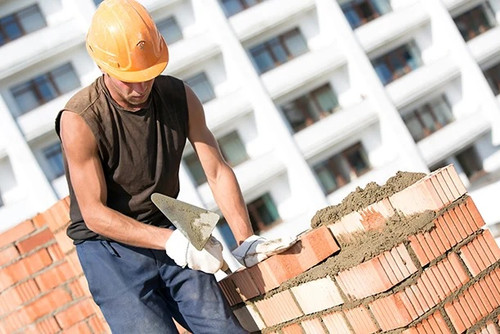Chafing as a Bricklayer
Posted by Jack Miller on 31st Oct 2022
If you work in construction, chances are you've experienced chafing at some point. For those who don't know, chafing is simply irritation of the skin caused by friction. It can happen anywhere on your body where skin rubs against skin or clothing, but it's most common in the groin area. Chafing can be extremely painful and even lead to infections if it's not treated properly.
As a brick layer, you're at a higher risk for chafing because of the nature of your job. You're constantly bending, squatting, and lifting heavy blocks of concrete, which can create a lot of friction. Add to that the fact that you're probably sweating a lot due to the heat and physical exertion, and you've got the perfect recipe for some serious chafing.
Luckily, there are some things you can do to prevent thigh chafing before it starts. In this blog post, we'll take a look at what causes chafing, how to prevent it, and how to treat it if it does happen.
What Causes Chafing?
As we mentioned before, chafing is caused by friction. This can happen when two pieces of skin rub together or when clothing rubs against the skin. The type of fabric you're wearing can also play a role; synthetic fabrics tend to cause more friction than natural fabrics like cotton.
Typically, chafing only occurs in areas where there is a lot of movement (like the groin or armpits) or where clothing is tight-fitting (like sports bras). However, it's also possible to get chafed skin anywhere on your body if you're doing something that creates a lot of friction (like bricklaying).
How to Prevent Chafing
There are several things you can do and take anti chafing steps before it starts. First, make sure you're wearing loose-fitting, breathable clothing. This will allow your skin to move without creating too much friction. Second, apply lube or Vaseline to any areas where you think chafing might occur. This will create a barrier between your skin and whatever is causing the friction. Third, stay hydrated! Drinking plenty of water will help keep your skin from getting too dry, which can make chafe more likely.
If you work in construction or another industry where chafe is a common problem, consider investing in some anti-chafe gear. There are plenty of options out there, from special creams and powders to underwear designed to prevent chafe.
How to Treat Chafed Skin
If you do end up with chafed skin, don't panic! There are plenty of chafing remedies so that it doesn't get worse. First and foremost, clean the area with soap and water as soon as possible. This will help remove any bacteria that could cause an infection. Then, apply an antibiotic ointment to further protect the area from infection. Finally, cover the area with a bandage or gauze pad and replace it as often as needed until the area heals completely.
We all want to perform our jobs without the pain of thigh rub. An anti-chafe thigh guard is a simple way to avoid chafe while you're working. You can wear them under work shorts or even on their own if suitable. Unlike other thigh guards, No More Chafe's do not slip, wrinkle, or rub. Even in a high-pressure, sweaty workplace, they protect delicate skin against chafing.
To find out more, check out our FAQs and to buy our products, just head to our online store.

